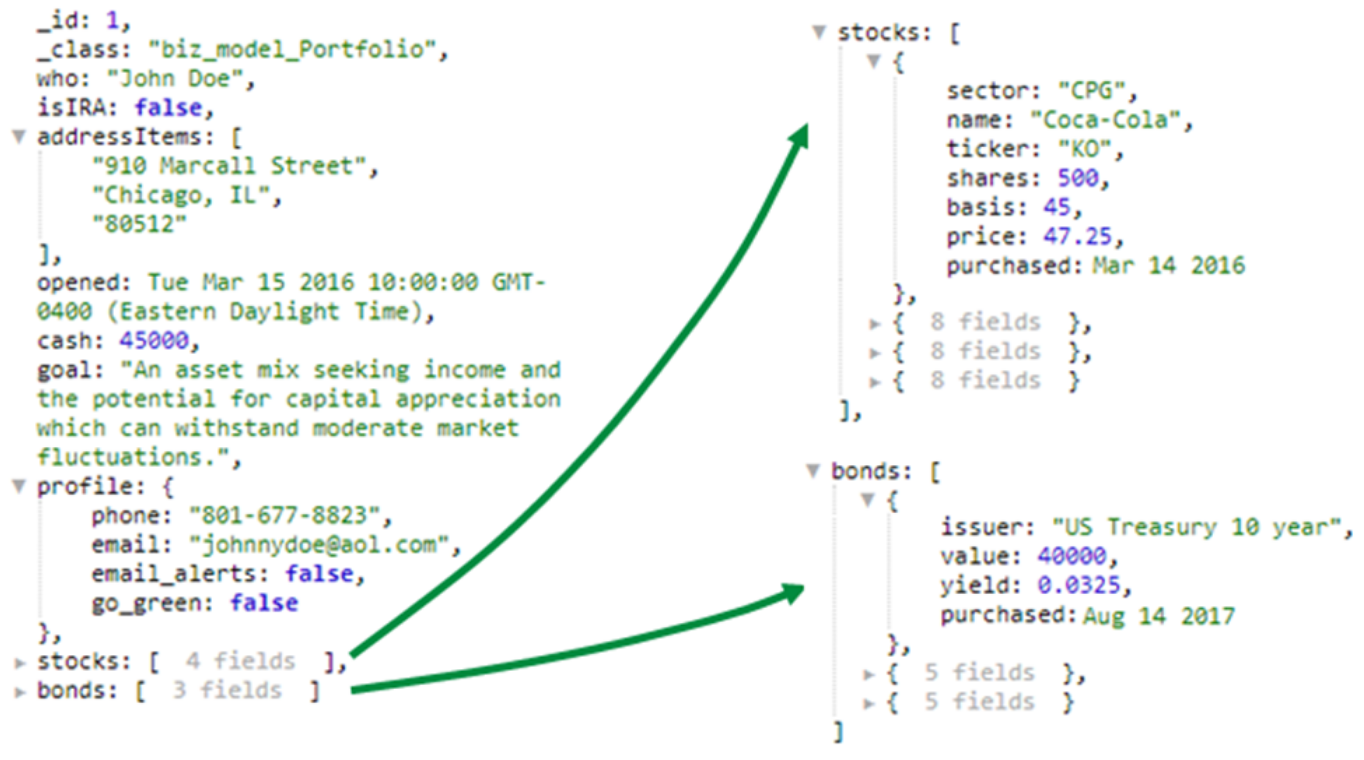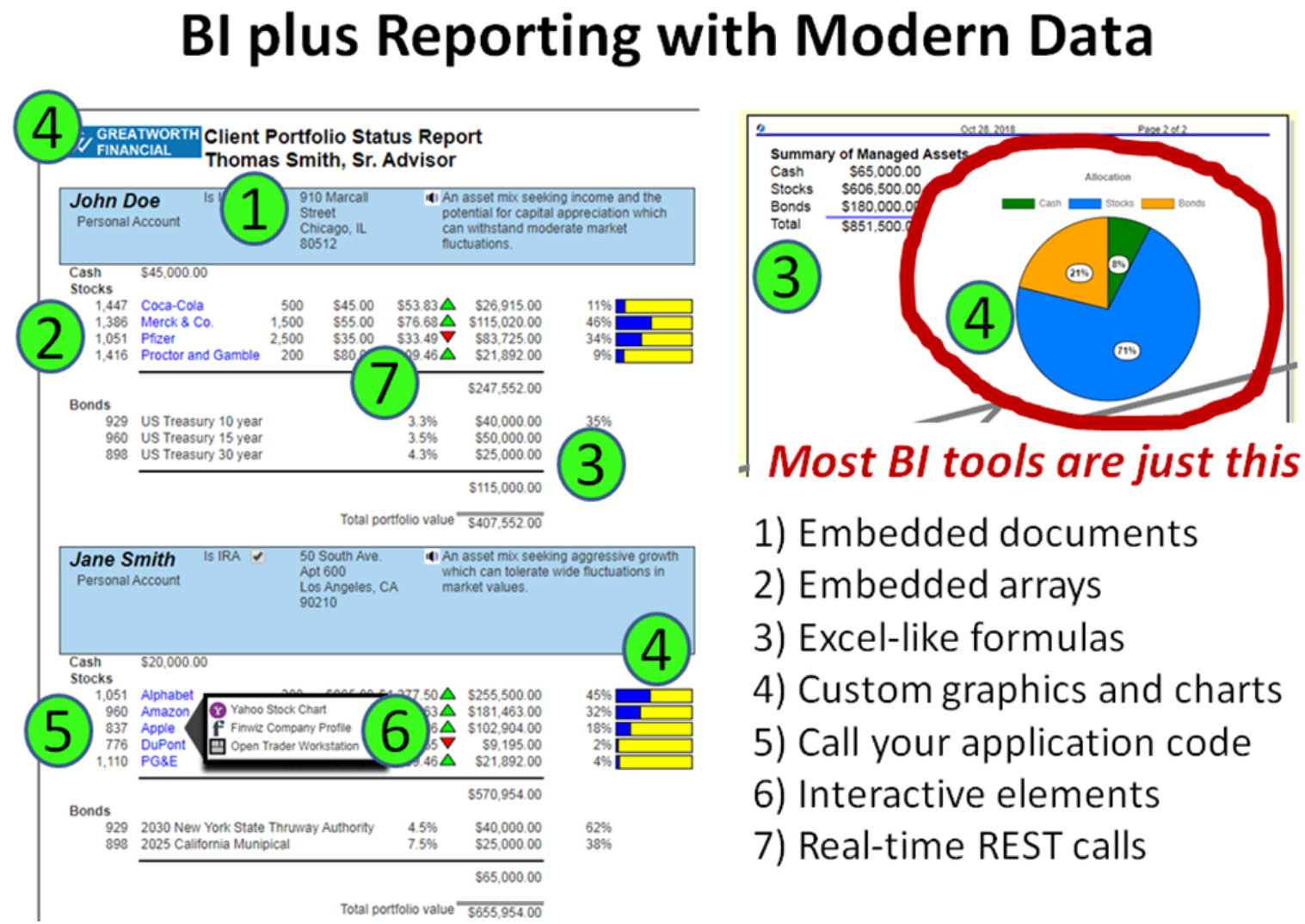What is Different
Native MongoDB Integration
Qarbine’s support for direct, native queries is a significant differentiator. It fully leverages the MongoDB document model, allowing data to remain in its native form. This is crucial because it preserves the flexibility and richness of the document structure, which can be lost when using legacy SQL tools or performing ETL (Extract, Transform, Load) tasks. The integration with MongoDB Atlas and its features like Atlas Vector Search, Full Text Search, and Data Lake ensures that users can utilize powerful MongoDB functionalities such as $vectorSearch and full text search within Qarbine.Integrated Tools and Segregation of Duties
The suite includes over 10 integrated tools for data interaction and analysis component building. By segregating data retrieval from data analysis, Qarbine encourages the reuse of components and leverages diverse expertise across teams. This means developer teams can create optimized data retrieval components, which analysts and other teams can easily discover and use. The shared Catalog is a key feature that promotes continuous collaboration and skill sharing among team members.Empowering Teams and Individuals
Qarbine is designed to let each team or individual excel in their area of expertise, leading to increased productivity and higher quality insights across the enterprises. The inclusion of a no-code dialog builder enhances analysis flexibility and helps to prevent query sprawl. The ability to print, export to PDF, display, or integrate analysis results into popular products demonstrates Qarbine’s collaboration versatility.Embedding and Collaboration
Qarbine’s embeddable nature allows it to be integrated into applications, facilitating the use of modern data in everyday workflows. This feature underscores Qarbine’s commitment to fostering productive collaboration with modern data across people, programs, and processes.MongoDB Query and Data Integration
Qarbine supports direct, native MongoDB queries to any endpoint whether it’s a real-time, analytic, or secondary node. This is the best way to access the full power of the MongoDB developer data platform- especially the aggregation pipeline feature. The document data model offers immense flexibility to store business objects that model your application domain. Documents can be nested to express hierarchical relationships and store structures like arrays. Here is a query for a portfolio collection that takes advantage of the document model.db.portfolio.find( {cash: {$gt: 2000}, isIRA: false } )
A sample portfolio document with embedded documents and arrays may look like
 The query results can directly feed a Qarbine analysis template which defines how to iterate through the documents, interact with them using Excel-like formulas, and format the results.
The query results can directly feed a Qarbine analysis template which defines how to iterate through the documents, interact with them using Excel-like formulas, and format the results.

The report “just works” like you’d expect because it uses the same data model as your application! Qarbine can handle any data shape and has lots of conditional configuration as well. It can be super painful to even attempt to use legacy SQL tools with the document model and dynamic data structures enabled by MongoDB.
Qarbine’s Comprehensive Analysis and Reporting Suite
Qarbine’s suite includes tools for advanced querying, template definition, dialog creation, and component management. The Template Designer combines the formula power of Excel, with Word formatting features, and PowerPoint layout interactions. With over 450 macro functions, Qarbine facilitates complex data analysis and processing, similar to Excel’s flexibility. Numerous “custom” cells are available for analyzing and presenting data. Templates generate interactive web pages that blend seamlessly with application interfaces, enhancing user productivity. Users maintain context effortlessly as they navigate between application and Qarbine generated content in a much more productive manner. Qarbine’s PDF and other exporting capabilities allow for sharing of high-quality analytical insights, facilitating modern data collaboration. These are a few of Qarbine’s many Modern Data Collaboration Suite features. More complex queries and analyses can be accomplished with Qarbine than with legacy, siloed SQL centric tools. Shown below is an analysis with a deeply nested portfolio object containing stock and bond holdings and an enumeration of Qarbine’s distinctive features.
Note that Qarbine’s two pass analysis engine enables percent of total calculations (#4 circle with blue and yellow bars). This is a core requirement in many analyses, especially those found in ecommerce, financial services, and retail.
